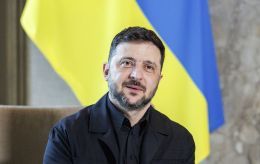Under Kremlin's nose: Role of drone attacks and border breaches in shifting war onto Russian soil
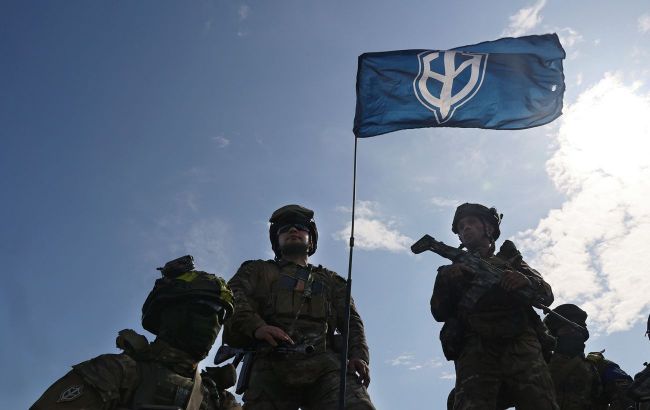 Russian volunteers from the RVC, Freedom of Russia, and the Siberian Battalion once again breached the border with Russia (Getty Images)
Russian volunteers from the RVC, Freedom of Russia, and the Siberian Battalion once again breached the border with Russia (Getty Images)
Unknown drones attacked at least 10 regions of Russia overnight on March 12, with hits reported on an oil refinery near Nizhny Novgorod. In the morning, the Russian Volunteer Corps (RVC) alongside two other units breached the border and likely took control of settlements.
More details on the mass drone attack, the latest raid, primary targets, and potential consequences are available in the material by RBC-Ukraine.
Data from Telegram channels of the Russian Volunteer Corps, Freedom of Russia legion, Siberian Battalion, Russian governors, the Russian Ministry of Defense, and publications by Defense Express were used in preparing the material, along with comments from Defense Intelligence representative Andrii Yusov and experts Oleksandr Musiienko and Vladyslav Seleznov.
Content
- Under attack in 10 regions: What is known about the massive drone attack
- Ukraine increases frequency. What systematic UAV strikes indicate
- New breakthrough: What's happening in the Belgorod, Bryansk, and Kursk regions
- Information campaign or war on Russian territory? What experts say
- Another Il-76 has crashed. Su-27 possibly shot down: what is known
Under attack in 10 regions: What is known about the massive drone attack
On the night of March 12, at least nine Russian regions suffered a massive drone attack. In particular, the governor of the Oryol region, Andrey Klychkov, reported a strike on a fuel and energy complex in Oryol. Russian media reported damage to an oil depot and a massive fire. Over 60 people and a firefighting train extinguished the fire, which was put out in the first half of the day.
In the Nizhny Novgorod region, drones attacked an industrial zone in the city of Kstovo, resulting in a fire at an oil refining installation. Telegram channels reported a fire at the Lukoil refinery. It is reported that the operation of the Lukoil-Nizhny Novgorodnefteorgsintez technological installation has been suspended.
The attacked plant is located 800 km from Ukraine and is considered one of Russia's most powerful. It processes 15 million tons of oil per year, accounting for about 5% of the total volume in the Russian Federation. The refinery may have suspended operations for a long time, as, for example, in January, a catalytic cracking unit malfunctioned, for the repair of which Western components are needed, but there are no opportunities to order them.
Explosions were heard in the Ramensky district of the Moscow region. It was reported that air defense forces allegedly shot down a drone flying towards Moscow. Similar incidents occurred in the Tula, Voronezh, and Leningrad regions, where, according to the authorities, there were no hits. Notably, the South CHP in St. Petersburg caught fire, but it is not yet known if it is related to the nighttime attack.
Unknown drones also attacked regions bordering Ukraine. In the Belgorod region, explosions damaged a power transmission line, leaving seven villages without electricity. In the Kursk region, according to Governor Roman Starovoit, allegedly six UAVs were shot down over five districts. There were also reports of the destruction of an aircraft-type drone over the Brasovsky district of the Bryansk region.
In the morning summary of the Russian Ministry of Defense, there was an attempt to strike with 25 drones, all of which were allegedly shot down by "next-generation air defense systems." However, the Voronezh and Nizhny Novgorod regions, where the Lukoil refinery was affected, are absent from the list of attacked areas.
The Rostov region became the tenth region attacked in the morning. As stated by Governor Vasily Golubev, drones were moving towards Taganrog, but supposedly aerial targets were successfully shot down outside the city upon approach. Ukrainian sources write that "something fell and exploded" in the area of the Penoplex plant. According to official information, thermal insulation materials are produced there.
It is worth noting that the local aviation plant was attacked here days ago. The target may have been the A-50 long-range reconnaissance aircraft previously damaged at the Machulishchy airfield in Belarus. It is known that one of the hangars was hit, but there is no confirmed information about a possible strike on the aircraft.
Ukraine increases frequency. What systematic UAV strikes indicate
As of 17:00, the Ukrainian side has not officially confirmed involvement in the mass airstrike. However, sources from RBC-Ukraine claim that the Defense Intelligence is behind the attack on the Lukoil refinery. Oleksandr Musiienko, Head of the Сenter of Military Law Researches, sees a clear trend in this.
"The number of drones being used is increasing, and Ukraine is expanding its capabilities. This is already evident. To put it simply, we are only now achieving the necessary frequency and effectiveness of strikes. We are already expanding our capabilities in such a way that, at the very least, we are not lagging behind the Russians, and at best, surpassing them," he tells RBC-Ukraine.
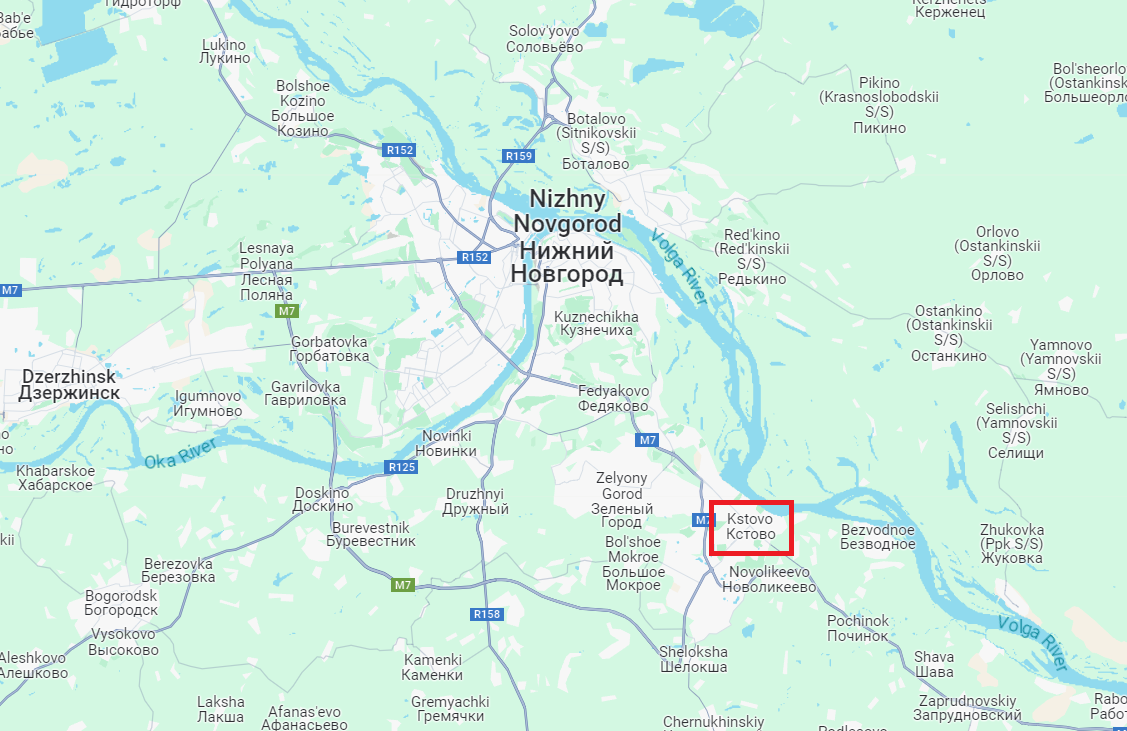 Photo: Lukoil refinery in Kstovo is located 800 km from Ukraine (google.com/maps)
Photo: Lukoil refinery in Kstovo is located 800 km from Ukraine (google.com/maps)
He also draws attention to the systematic nature of the strikes on objects of the Russian military-industrial complex and the oil and gas industry. In his opinion, this addresses a complex task.
"The first is to reduce Russia's capabilities in terms of weapon production, and the second is to reduce revenues to the budget, which finance the war against Ukraine. Lukoil refineries operate in both the external and internal markets, generating revenue from the sale of oil and petroleum products abroad. It is absolutely logical: to reduce Russia's capabilities, it is necessary to target industrial facilities. Note that often strikes, when we talk about refineries, are directed at equipment and terminals responsible for oil refining. That is, not only storage facilities but the most valuable objects," explains the expert.
According to Reuters, as a result of today's attack on the refinery in Kstovo (Nizhny Novgorod region), production partially stopped due to damage to the atmospheric oil refining unit AVT-6. Lukoil declined to comment, but according to agency sources, half of the capacity has been shut down.
Systematic targeting of such facilities does not necessarily mean that Russia will start massively deploying air defense assets from the front to protect them. This is not observed yet, explains Musiienko.
"The Russians also maintain a large number of air defense assets on the front line. It's worse for them because then we have opportunities. Any scenario suits us in principle. If they start moving them from the front, it means we can effectively target enemy objects. If not, our forces will strike at objects on Russian territory. But overall, the question is not that Russia lacks air defense systems. It's that Ukraine is so successfully planning routes and carrying out strikes," he adds.
New breakthrough: What's happening in the Belgorod, Bryansk, and Kursk regions
The loud morning of March 12 didn't end with drone attacks for the Bryansk, Belgorod, and Kursk regions. Units of Russian partisans broke through the border in several places and engaged in battles.
As reported by the Freedom of Russia legion, they crossed the border, including on tanks. Also, a video appeared on a Telegram channel showing the destruction of an APC in the village of Tetkino in the Kursk region. According to volunteers, the armored vehicle set fire to a residential building with incendiary rounds, and the partisans "couldn't just leave it like that."
The breakthrough was supported by fighters of the Russian Volunteer Corps (RVC). According to them, the RVC is again at the forefront of the attack, while the Putin army is abandoning weapons without even starting the fight.
"Last month, the Kremlin regime finally dealt with the last hope of peaceful opposition. 'Elections' have been appointed. The RVC fighters never had illusions and knew that the power in Russia understands only the language of force. That is why we are entering the territory of the Russian Federation again," the message said.
The Siberian Battalion also announced "returning to Russian soil." According to their Telegram channel, fierce battles are ongoing on the territory of the Russian Federation, and the fighters have begun to fulfill the promise to remove Vladimir Putin's regime by force. Additionally, they called on Russians to ignore the "elections." A video showed the group advancing along a forested area.
"Ballots and polling stations are a fiction in this case. You can really change life for the better only with weapons in hand. Everyone who does not accept a miserable life under tyranny must make the right choice," the volunteers added.
Sources from RBC-Ukraine confirmed that fighters were advancing towards Grayvoron in the Belgorod region. The news agenct has interceptions where Russians in panic talk about a breakthrough of the border and complain about battles.
Russian public pages write about the breakthrough of several groups into the Belgorod region in pickups with the support of mortar and artillery fire. Supposedly, about 50 people broke through from the side of Odnorobivka in the Kharkiv region, and several tanks were spotted approaching the border. RF propagandists claim that the village of Lozova Rudka is under the control of volunteers. Governor Vyacheslav Gladkov reported shelling of the Grayvoron district, and a video with gunfire sounds in Belgorod appeared online.
Later it became known that as a result of a drone strike on the administration building of Belgorod, glass and doors were shattered.
Residents of the Kursk region reported gunfire in the Tetkino area. The first skirmishes started here at about 08:00. Russian public pages write about at least two wounded. Meanwhile, there is unrest in Bryansk. According to Governor Alexander Bogomaz, "preventive measures to prevent terrorist acts" are being carried out in the city. He did not provide details, but public pages wrote about street closures.
According to the Russian Ministry of Defense, the breakthrough began around 02:00 (Kyiv time) simultaneously from three directions in the Belgorod region. Russian forces struck with missiles, aircraft, and artillery and allegedly prevented the breakthrough. According to their version, several dozen people were killed, five tanks, and an APC were destroyed. Four attacks were also allegedly repelled in the Kursk region.
According to an anonymous Telegram channel Kremlin tabakerka, the attack was repulsed only in the Bryansk region, while battles in border villages of Belgorod and Kursk regions are ongoing. Information about losses is not disclosed, but the "problems are serious." According to unconfirmed information, two secret headquarters have been partially lost, and there are casualties among officers. The Federal Security Service of the Russian Federation (FSB) and National Guard of Russia (Rosgvardia) insist on a more active use of the army, otherwise "battles may drag on until the end of the week."
Meanwhile, the Freedom of Russia legion announced that Tetkino is under the control of liberation forces, and the Putin army is leaving positions and abandoning equipment. According to other information, the battles for the settlement are still ongoing.
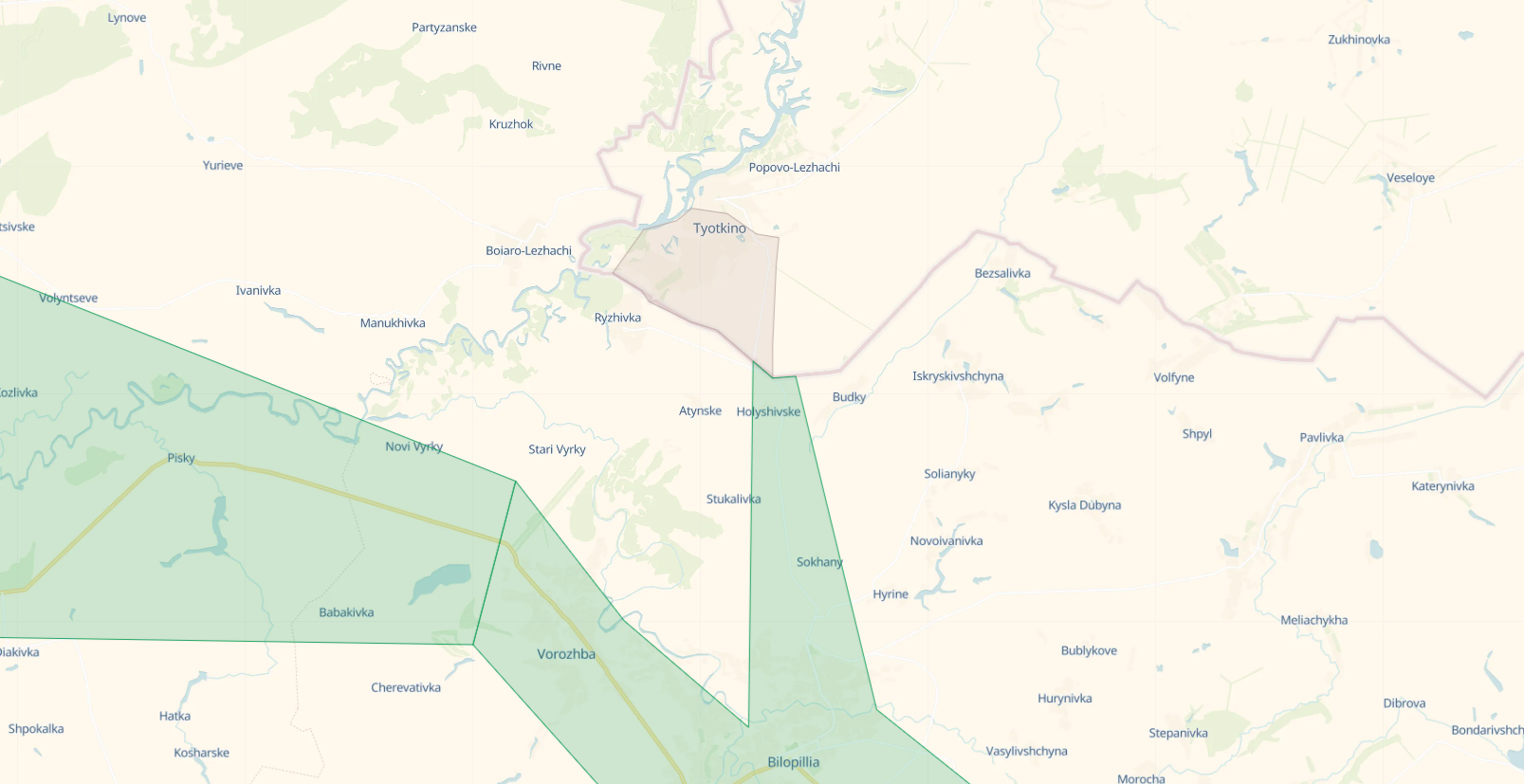
Photo: The village of Tetkino in the Kursk region has also entered the gray zone (deepstatemap.live)
A representative of the Defense Intelligence of the Ministry of Defense, Andrii Yusov, has told RBC-Ukraine that the Freedom of Russia legion, RVC, and Siberian Battalion are operating autonomously on Russian territory: "as independent structures and organizations, performing their socio-political tasks." According to him, it is a joint operation.
"In the end, they are citizens of the Russian Federation and have every right to do so," he added.
In an interview with Radio Liberty, he suggested that Russian volunteers are operating with captured weapons. He emphasized that they had succeeded in breaking through the Russian border before. It should be noted that in March and April 2023, breakthroughs occurred in the Bryansk region, the largest of which was in May to the Grayvoron district of the Belgorod region. Since then, volunteer units have periodically conducted raids.
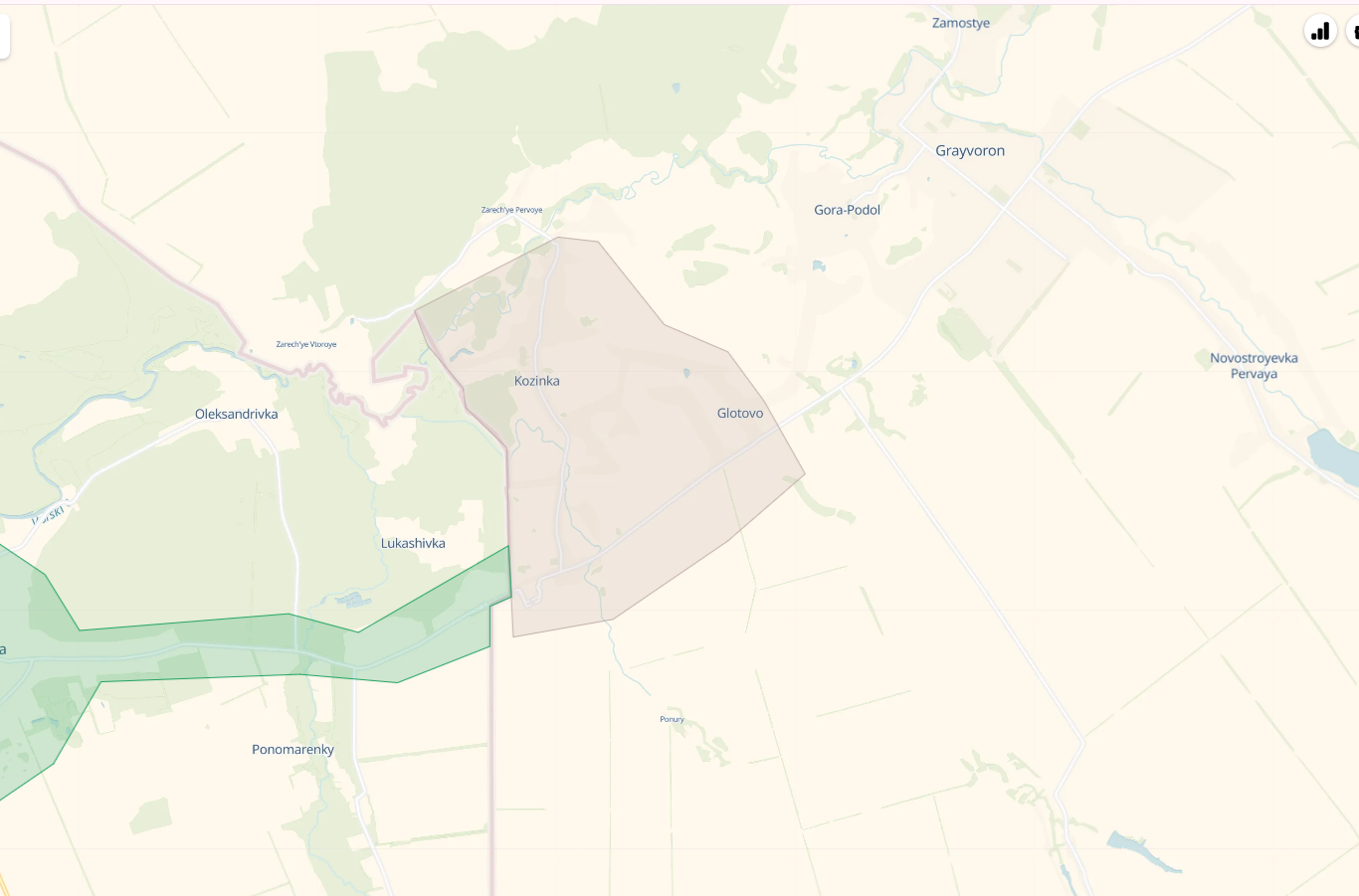
Photo: Settlements in the Russian Federation in the gray zone (deepstatemap.live)
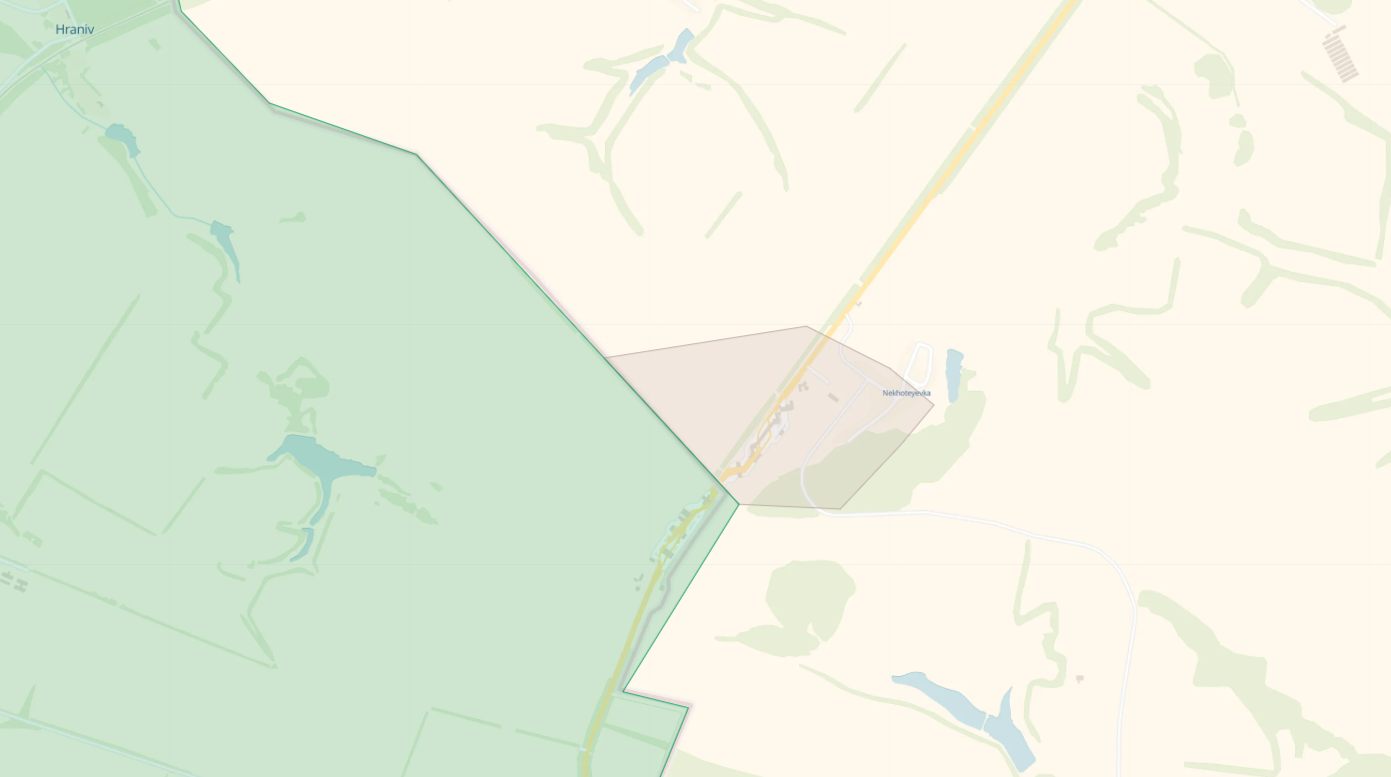 Photo: Settlements in the Russian Federation in the gray zone (deepstatemap.live)
Photo: Settlements in the Russian Federation in the gray zone (deepstatemap.live)
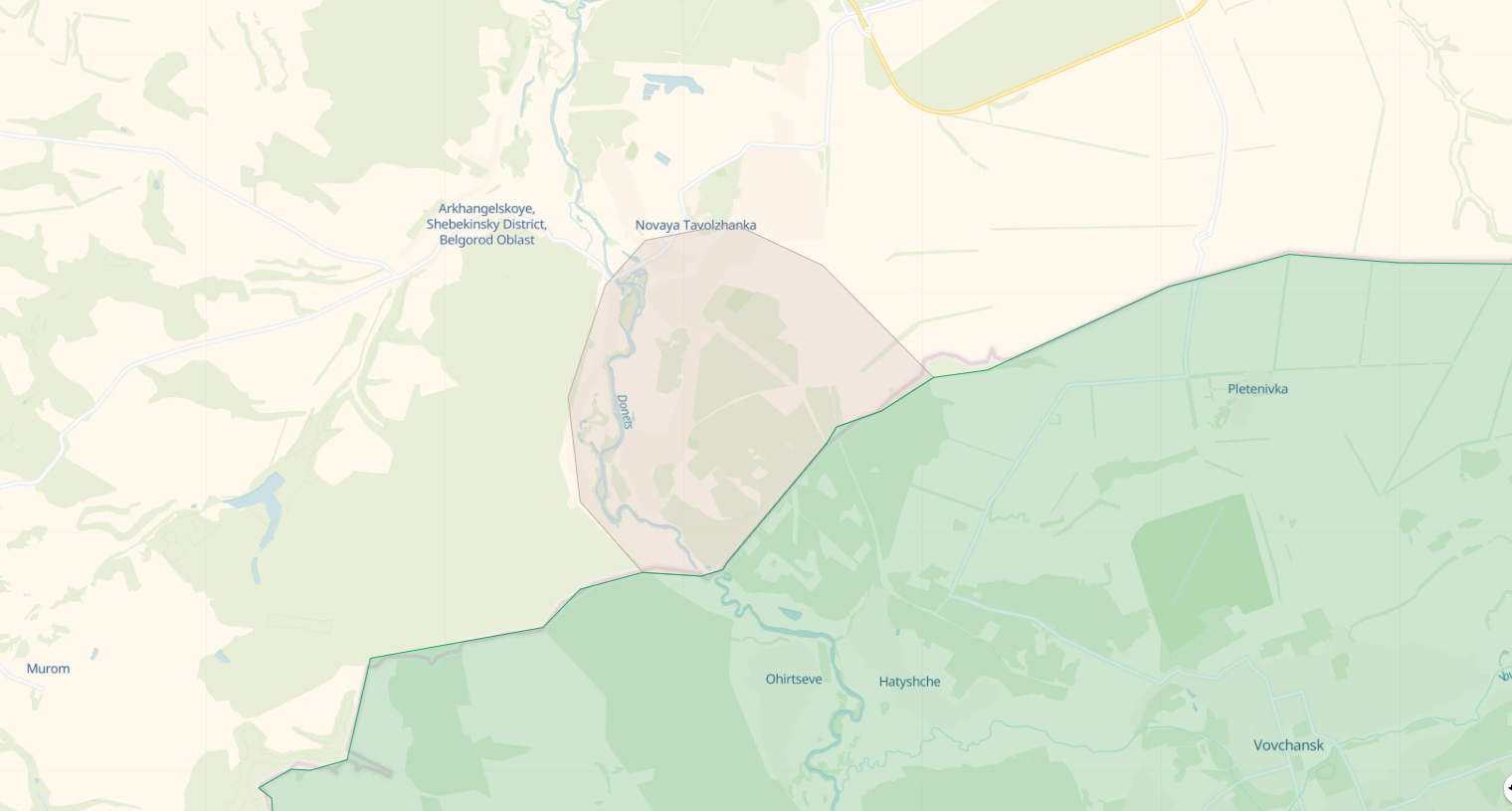 Photo: Settlements in the Russian Federation in the gray zone (deepstatemap.live)
Photo: Settlements in the Russian Federation in the gray zone (deepstatemap.live)
As of the evening, settlements in the "gray zone" are also marked on DeepState maps, including Glotovo towards Grayvoron, Nekhotiyivka, and a section towards Novaya Tavolzhanka (Belgorod region).
Information campaign or war on Russian territory? What experts say
Today's breakthrough appears to be more extensive than the raids of the second half of 2023. Presumably, this is because it has not only a propaganda purpose on the eve of Putin's elections. It's too early to conclude a full-scale military operation, although the situation needs to be viewed dynamically and monitored as it develops.
Oleksandr Musiienko describes such a goal: to demonstrate that there is an armed opposition, it is ready to resist, and it will grow.
"The list of participants has already expanded, as the RVC and the Legion of Freedom of Russia have been joined by the Siberian Battalion. Another point is that I have information that other organizations and movements within Russia will join soon, and there will be news about it. They are waiting for a signal, and a manifesto with clear political demands to the Putin regime will be published. They will come out with it, it will be publicized, and we will observe the process of forming a powerful armed opposition in the Russian Federation. We haven't seen anything like this before. I hope the information about this will appear very soon," he tells RBC-Ukraine.
 Photo: the new action of Russian volunteers may indicate the formation of an armed anti-Putin opposition (Getty Images)
Photo: the new action of Russian volunteers may indicate the formation of an armed anti-Putin opposition (Getty Images)
For Ukraine, such a raid may also pursue specific military objectives.
"For us, this is important because the more Russian troops are destroyed on the territory of Russia, the less they will be used against Ukraine. As for the possible reduction in the dynamics of shelling our border areas, I think one of the scenarios is the destruction of the S-300 systems in Belgorod and beyond. This would primarily allow us to reduce the number of strikes in Kharkiv and its region. But only for a while. To make it permanent, the Russian Volunteer Corps and other insurgents should also be there permanently," Musiienko notes.
For military expert, former spokesman of the General Staff of the Armed Forces of Ukraine Vladyslav Seleznov, expectations are much lower. In his opinion, the raid will fundamentally not change the situation in the border regions, and the volunteers' action is likely to be informational and power-based. And this is evidenced by the number of involved fighters, which is only several dozen.
"The key mission is to demonstrate to the Russian population that armed resistance to the Putin regime is entirely possible. And it is real and effective. Especially against the background of Russian propagandists during the preparation for Putin's presidential elections who were talking about 'Russia being a safe country' and that 'everything is safe, comfortable, and abundant' there," he believes.
The informational component is to show Russians that the TV lies, as hardly all casualties during the volunteers' raid will be covered on TV. Propaganda says one thing, but people see another from their windows, so operations of such a level will continue, Selezniov added. It should be noted that Russia is currently imposing strict censorship to prevent the population from learning the whole truth about today's events. It became known that in the Kursk region, the publication of data on the army's work and shelling locations has been banned.
Musiienko sees signs that the war may indeed move onto Russian territory.
"The Putin regime represses opposition movements, trying to destroy them. And the volunteers are performing an important task to unite everyone who protests against Putin and is ready to do so with weapons in hand. As far as I know, there are certain successes, which may indicate a gradual transition of the war onto Russian territory. Perhaps not as quickly as we would like, but the trends are there," he adds.
Another Il-76 has crashed. Su-27 possibly shot down: what is known
March 12 became another black day for Russian aviation. First, footage appeared online allegedly showing the destruction of a heavy bomber Su-27 over the Belgorod region. Local social media accounts reported that residents heard a powerful explosion in Valuyki, followed by a forest fire. There were no official comments from the Russian side.
Ukrainian intelligence has not yet confirmed the data on the plane crash.
"There (in the Belgorod region) very active combat actions are taking place. Many events are already happening. Such information exists. It is currently being additionally verified," said Andrii Yusov, a representative of the Defense Intelligence.
Later, a military transport Il-76 crashed near the Russian city of Ivanovo. Judging from the published videos, one of its engines caught fire, which then detached from the aircraft altogether. The catastrophe resembles the incident with an Il-76 in Ryazan in the summer of 2022. As Defense Express writes, it was quite indicative and a repetition was forecasted for the future. The loss of one of the four engines is not catastrophic for the Il-76, which is capable of taking off even with three engines. Excluding human error, analysts believe the plane could have crashed due to the malfunctioning of the fire suppression system. Despite extinguishing the flames, the structure did not withstand, and the engine detached during flight, which could have led to disruptions in the control system.
The Russian Ministry of Defense reports 15 fatalities; Russian media write that allegedly 16 bodies were found at the scene. Onboard were pilots from the Orenburg and Tver regions; the plane was on a training flight. The official cause of the crash is technical malfunction. Social media accounts, citing sources, note that the Il-76 could also have crashed due to a bird strike entering the engine or due to the rupture of the rotor part caused by "metal fatigue."
In any case, the recent incidents expose problems in Russian aviation.
"They have occurred before. The point is that aircraft are used extremely intensively, understandably increasing the load on them and the pilots, increasing the number of errors. Plus, there are problems with technical maintenance, as the aircraft have been flying for many years. I think if the Su-24 crash is confirmed, it was most likely shot down. As for the Il-76, I would not exclude human error, a pilot's mistake," sums up expert Oleksandr Musiienko.
